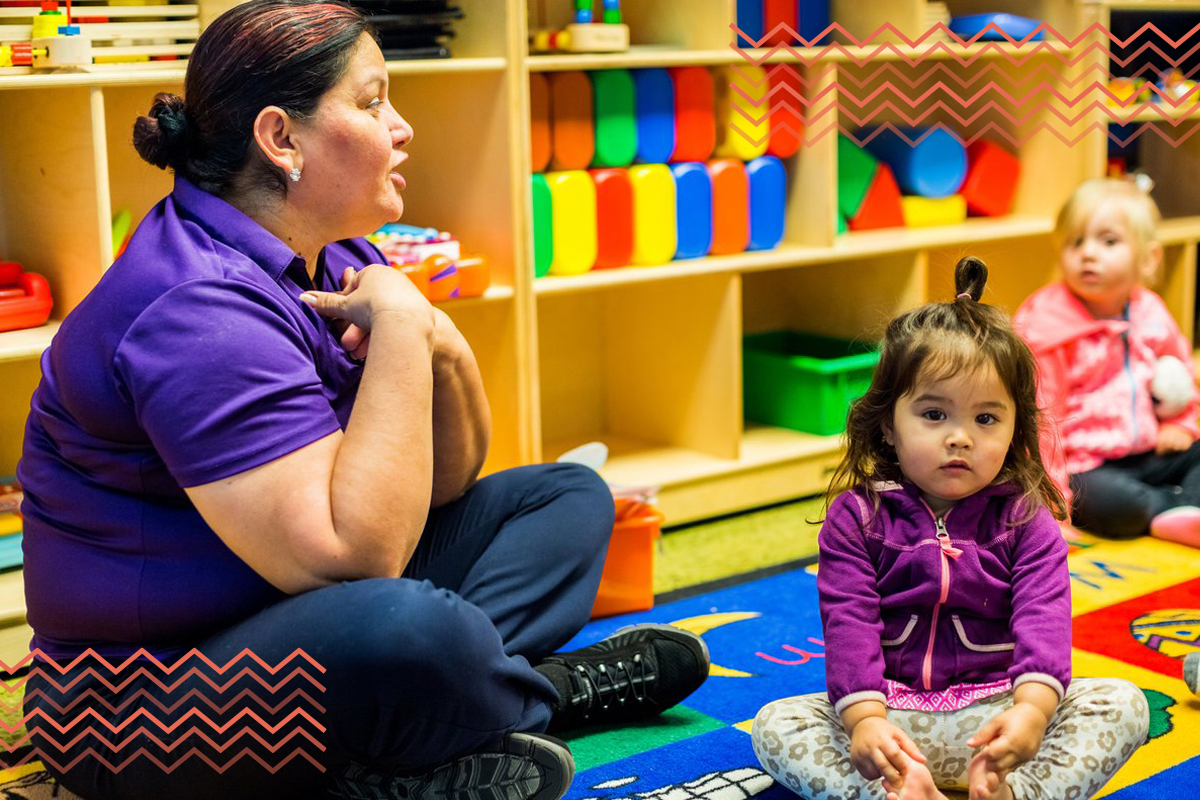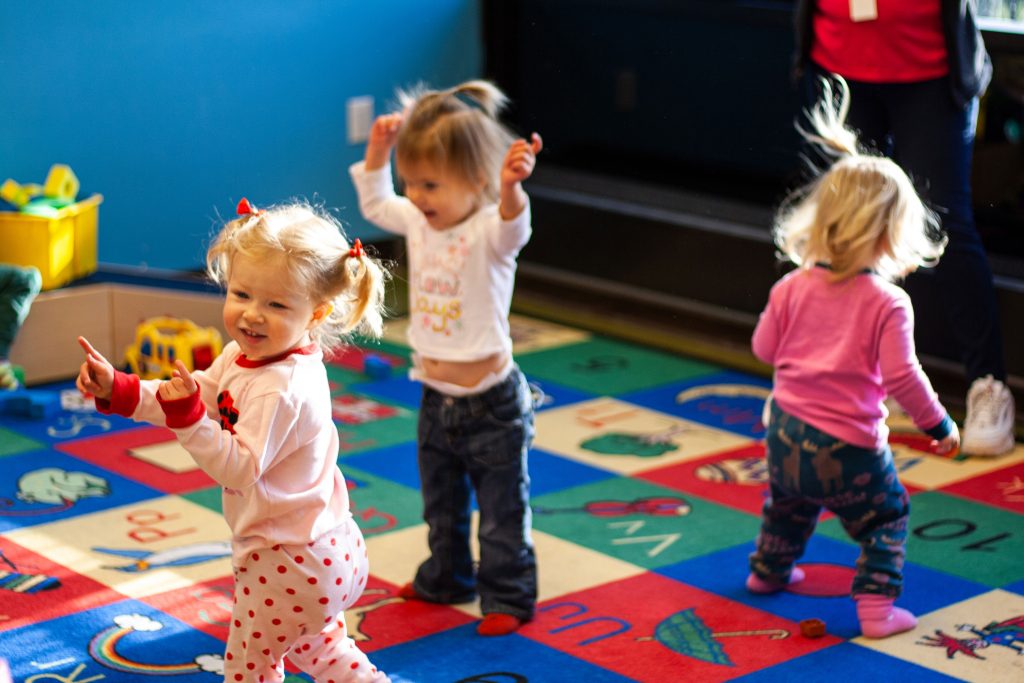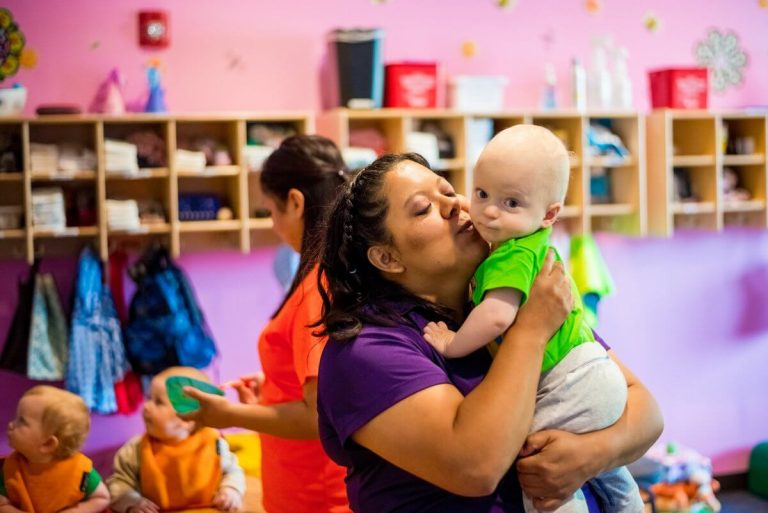Teaching Bilingually at Early Ages

Understanding more than one language can take you places. Speaking more than one language will get you even further! When children become bilingual at a young age, it sets them up for success throughout grade school and later in life. Casa de Corazón presents the opportunity for children as young as infants to learn both Spanish and English as they progress in their education. With bilingual education, these students are prepared to become global citizens.
Benefits of an Early Bilingual Education
A Sharper Mind
Too often, parents feel their young children will become confused when learning a second language, but early bilingual education has actually been shown to sharpen the mind. The Department of Education has said that when children start to learn a second language before they turn six years old, they are able to use logic, focus, make complex decisions, understand math concepts, and think about their language more ably than they might have before learning the second language. Instead of the practice confusing their minds, a more stable basis is formed, and they are able to more fully process other learning practices throughout their lives.
Learn more to discover when bilingual babies start talking.
Greater Social-Emotional Development
A significant percentage of individuals in the United States come from multilingual homes. When someone, especially a child, can speak more than one language, that individual can create stronger bonds with others in the neighborhood and surrounding community. Kids who can communicate effectively with others from another background typically become leaders in their schools, creating relationships with others who might have a different primary language than themselves. Not only does this help the child socially and emotionally, but it helps the community as a whole.
Preparation for Learning
When children are taught at a young age how to do something that might seem complicated, they are more prepared for learning when they hit kindergarten and grade school. Parents who are worried about their children’s readiness for kindergarten could find that increasing the skill of speaking a second language could make their preschoolers more confident as they carry the skills into the rest of their lives.
Support for Different Cultures
Some children live in a home where the culture isn’t the same as the community where they live. They are forced to speak English at school or with their peers, and some of them begin to lose the ancestral culture that is prevalent in their homes. With a bilingual education at Casa de Corazón, the home culture is supported and encouraged, while the child can also succeed in the community.
A Brighter Future
Over half of adults worldwide currently speak a second language. You can imagine how this might play out in college, the workplace, and in someone’s everyday life. The earlier your child learns a second language, the more likely the skill is to stick with him or her. Many colleges require a foreign language for admissions, so being bilingual can help with that.
If your child knows more than one language, there may be more opportunities for work or service in college. The individual could end up traveling for work, seeing the world, and getting paid for it. Bilingualism gives people the opportunity to make more professional and personal connections with a broader spectrum of individuals worldwide.
Being bilingual also helps the brain function better. For those who might be genetically prone to Alzheimer’s or dementia, the onset could be delayed for up to four years. You can see how getting an early start on your overall health would be a benefit.
How To Support Bilingualism at Home

Though your child can be taught bilingual education in school or at Casa de Corazón, it takes everyone working together to cultivate both languages and to help the child succeed. To support bilingual children at home, you can utilize some of the following resources:
Books – Children love to have books read to them, and they also love to leaf through the pages themselves as they learn to “read.” While you’re at the library, pick up one book in both languages. Read it to your child several times in both languages, encouraging your child to finish the sentences once he or she becomes familiar with the story.
Conversation – If you know, understand, and speak both languages yourself, you will be one of the most helpful resources for your child. Whether you’re calling the child in for breakfast, are asking him or her to do a particular chore, or are telling a story, speak in the second language your child is learning. Encourage your child to answer back in the same language.
Music – Music is catchy, making it a good resource when teaching a child something new. There are several songs that can be sung in both English and Spanish, but you can sing some that are unique to each specific language as well. Singing the ABCs to your child in both languages is a great start for the child to differentiate between the two.
Television – You’ve probably noticed there are many television shows with bilingual characters that are available for children. Many of them focus on colors, letters, numbers, and other simple things that are easy to pick up on in both languages. You can also check out the thousands of videos on YouTube to find something age-appropriate that will help your child.
Toys – Today there are so many toys that speak to the child. With the push of a button, the child has access to words and phrases they can repeat. If you’re in the market for a new toy for your child, look for some that will encourage the child to speak in his or her second language. You could also add some culturally appropriate toys to the toy box, even if they aren’t technological.
Getting Your Child Started in Bilingualism
Many schools are already integrating bilingual programs, so children are able to get started in grade school, but if you want your child to start earlier than that, Casa de Corazón’s Spanish immersion preschool might be a great fit for you. It’s our goal to help children confidently express themselves both in English and Spanish while engaging with each other and with members of the community.
Our cultural curriculum themes allow children to develop their brains, so they are ready to enter the world and have a life full of success. To learn more about the benefits of being bilingual, or to speak with someone about Spanish immersion preschool, fill in our online form or visit one of our locations today.


